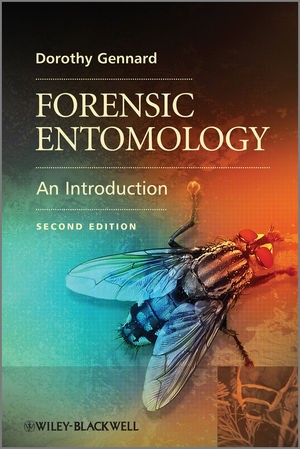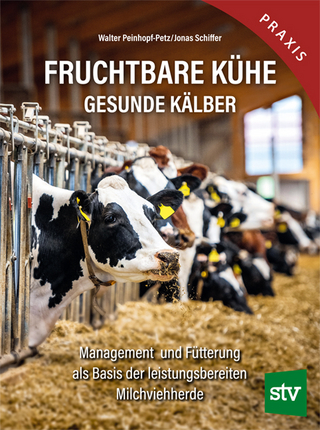
Forensic Entomology
John Wiley & Sons Inc (Verlag)
978-0-470-68902-8 (ISBN)
- Titel ist leider vergriffen;
keine Neuauflage - Artikel merken
Krzysztof Szpila, Nicolaus Copernicus University, Poland * Further coverage of civil applications of forensic entomology * Practical tasks and further reading included to aid understanding * Colour plate section and improved illustrations throughout to assist in the identification of insects associated with the corpse * Approaches the topic from the dual perspectives of basic entomology and its forensic applications * Covers the contributions to forensic investigations of both flies and beetles * Provides information on culturing insects collected from crime scenes * Guides students through the processes of writing entomological court reports and presenting in court alongside the scientific topics * Extended coverage of PMI calculations, role of professional associations for forensic entomologists and sampling at the crime scene * New sections to discuss the identification of traces of explosives found in larvae, puparia and pupae and DNA sampling from insects
Dr Dorothy Gennard is a principal lecturer in Forensic Science and co-ordinates the Forensic Entomology and Examination of Questioned Documents units. She is a member of the Royal Entomological Society and the World-Wide Dragonfly Association and a trustee of the British Dragonfly Society. Dr Gennard has close contact with the Lincolnshire Police Force and runs Forensic Entomology courses for the police and commercial forensic science companies.
List of plates ix List of figures xiii List of tables xvii Preface xix Acknowledgements xxi 1 The scope of forensic entomology 1 1.1 Forensic entomology in urban contexts 1 1.2 Stored product infestation and forensic entomology 2 1.3 Forensic entomology in the medico-legal context 3 1.4 The history of forensic entomology 6 1.5 Professional associations for forensic entomologists 9 1.6 The UK regulator for forensic science 10 1.7 Web addresses of relevant organisations 11 2 Forensic entomology, DNA and entomotoxicology 12 2.1 Preparation of specimens for molecular analysis 15 2.2 Methods of analysis and sources of information 16 2.3 Alternative methods 20 2.4 Validity of methodologies 21 2.5 The use of other molecular means of insect species determination 23 2.6 Insects and entomotoxicology 24 2.7 Forensic applications of arthropod behaviour for chemical analysis 27 3 Insects and decomposition 29 3.1 Indicators of time of death 29 3.2 Stages of decomposition of a body 30 3.3 Volatiles released from the body during decomposition 36 3.4 Decomposition in specific circumstances 38 4 Identifying flies that are important in forensic entomology 42 4.1 What is a fly and how do I spot one? 48 4.2 The fly lifecycle 53 4.3 Forensically important families of flies 60 4.4 Members of other orders that have forensic relevance in aquatic cases 73 4.5 Review technique: larval spiracles or mouthparts preparation of whole slide mounts 75 5 Key for the identification of European and Mediterranean blowflies (Diptera, Calliphoridae) of medical and veterinary importance adult flies 77 5.1 Introduction 77 5.2 Key 80 6 Identifying beetles that are important in forensic entomology 82 6.1 What do beetles look like? 82 6.2 The life stages of the beetles 87 6.3 Selected forensically relevant families of beetles 88 6.4 Features used in identifying forensically important beetle families 89 6.5 Identification of beetle families using DNA 97 6.6 Key to selected forensically relevant families in the order Coleoptera 98 7 Sampling at the crime scene 101 7.1 Entomological equipment to sample from a corpse 101 7.2 Catching adult flying insects at the crime scene 104 7.3 The sampling strategy for the body 106 7.4 Sampling at aquatic crime scenes 108 7.5 Obtaining meteorological data at the crime scene 109 8 Rearing insects and other laboratory investigations 111 8.1 Transporting entomological evidence to the laboratory 111 8.2 Laboratory conditions for fly rearing 112 8.3 Methods of maintaining and rearing insects terrestrial species 113 8.4 Dietary requirements of insects reared in the laboratory 116 8.5 Beetle rearing in the laboratory 117 8.6 Methods of maintaining aquatic species 119 9 Calculating the post mortem interval 121 9.1 Working out the base temperature 123 9.2 Accumulated degree data 124 9.3 Calculation of accumulated degree hours (or days) from crime-scene data 127 9.4 Sources of error 128 9.5 Use of larval growth in length to determine post mortem interval (isomegalen diagrams and isomorphen diagrams) 130 9.6 Calculating the post mortem interval using succession 132 9.7 The effects of hymenopteran parasitoids on post mortem interval determination 137 9.8 Review technique: interpretation of data from a crime scene case study 137 9.9 Further reading 138 10 Ecology of forensically important flies 139 10.1 Ecological relationships of some forensically relevant families 140 10.2 Specific family features 144 10.3 Fly infestation of the living 151 10.4 Flies influencing the crime scene 154 11 The ecology of some forensically relevant beetles 156 11.1 Ecology of carrion beetles (Silphidae) 157 11.2 Ecology of skin, hide, and larder beetles (Dermestidae) 159 11.3 Ecology of clown beetles (Histeridae) 163 11.4 Ecology of chequered or bone beetles (Cleridae) 164 11.5 Ecology of rove beetles (Staphylinidae) 165 11.6 The ecology of dung beetles and related families 166 11.7 Ecology of ground beetles (Carabidae) 168 12 Investigations in an aquatic environment 169 12.1 Decomposition and submergence in water 170 12.2 The nature of the water bodies in which submergence may take place 176 12.3 Methods of establishing time since corpse submergence indicator species 179 12.4 Attractants to the corpse 182 12.5 Methods of culturing aquatic insects 182 12.6 Algae an alternative source of determining time since submergence 182 13 The forensic entomologist in court 184 13.1 The expert s report 185 13.2 The content of the expert s report 187 13.3 The forensic expert in the courtroom 194 13.4 Communicating entomological facts in court 195 13.5 Physical evidence: its continuity and integrity 195 13.6 The code of practice for experts 196 13.7 Use of single joint experts 198 13.8 Practical assignment writing an expert report using the post mortem calculations generated from Chapter 9 198 13.9 Further reading on presentation in court 198 13.10 Web site addresses 199 Appendices 201 Glossary 205 References 216 Index 241
| Verlagsort | New York |
|---|---|
| Sprache | englisch |
| Maße | 170 x 249 mm |
| Gewicht | 590 g |
| Themenwelt | Naturwissenschaften ► Biologie ► Zoologie |
| Naturwissenschaften ► Chemie | |
| ISBN-10 | 0-470-68902-1 / 0470689021 |
| ISBN-13 | 978-0-470-68902-8 / 9780470689028 |
| Zustand | Neuware |
| Haben Sie eine Frage zum Produkt? |
aus dem Bereich


